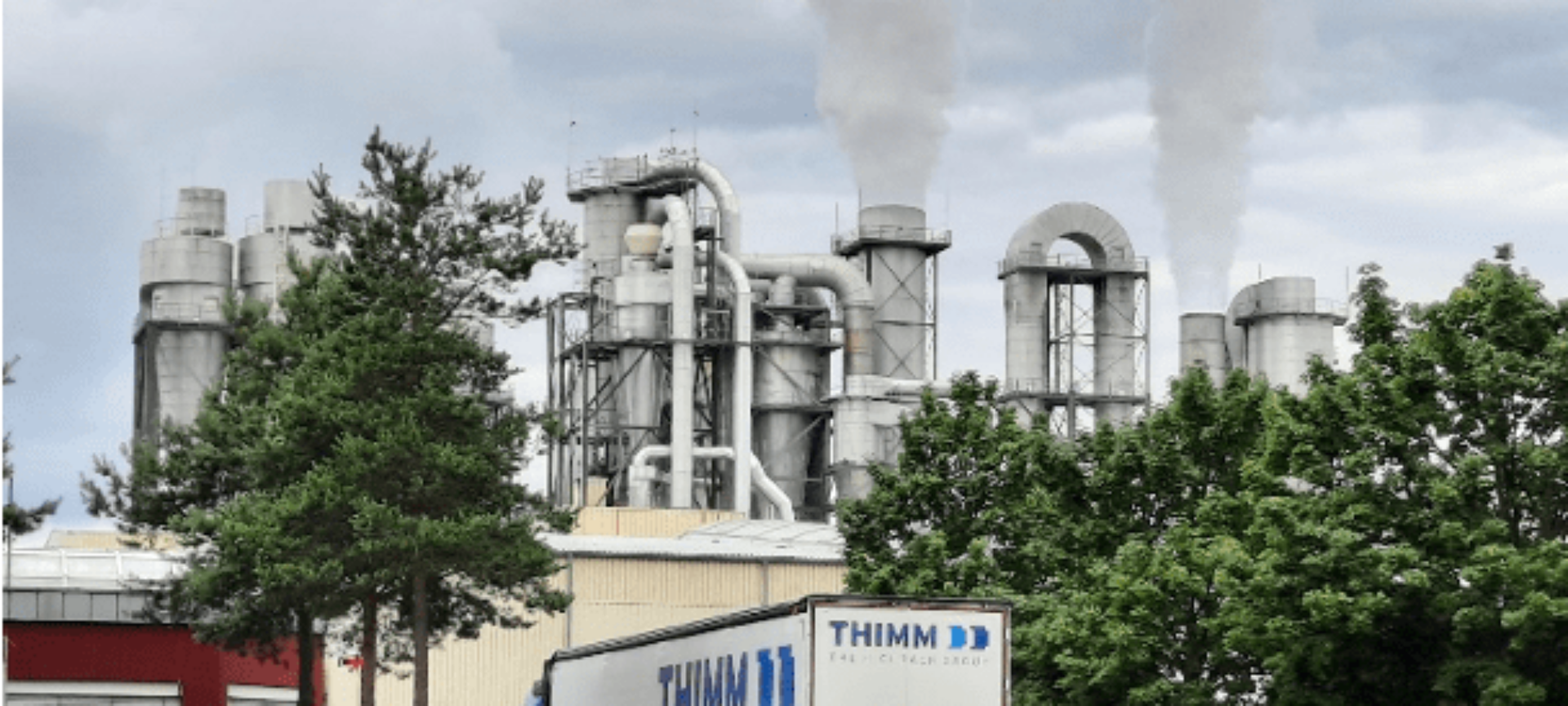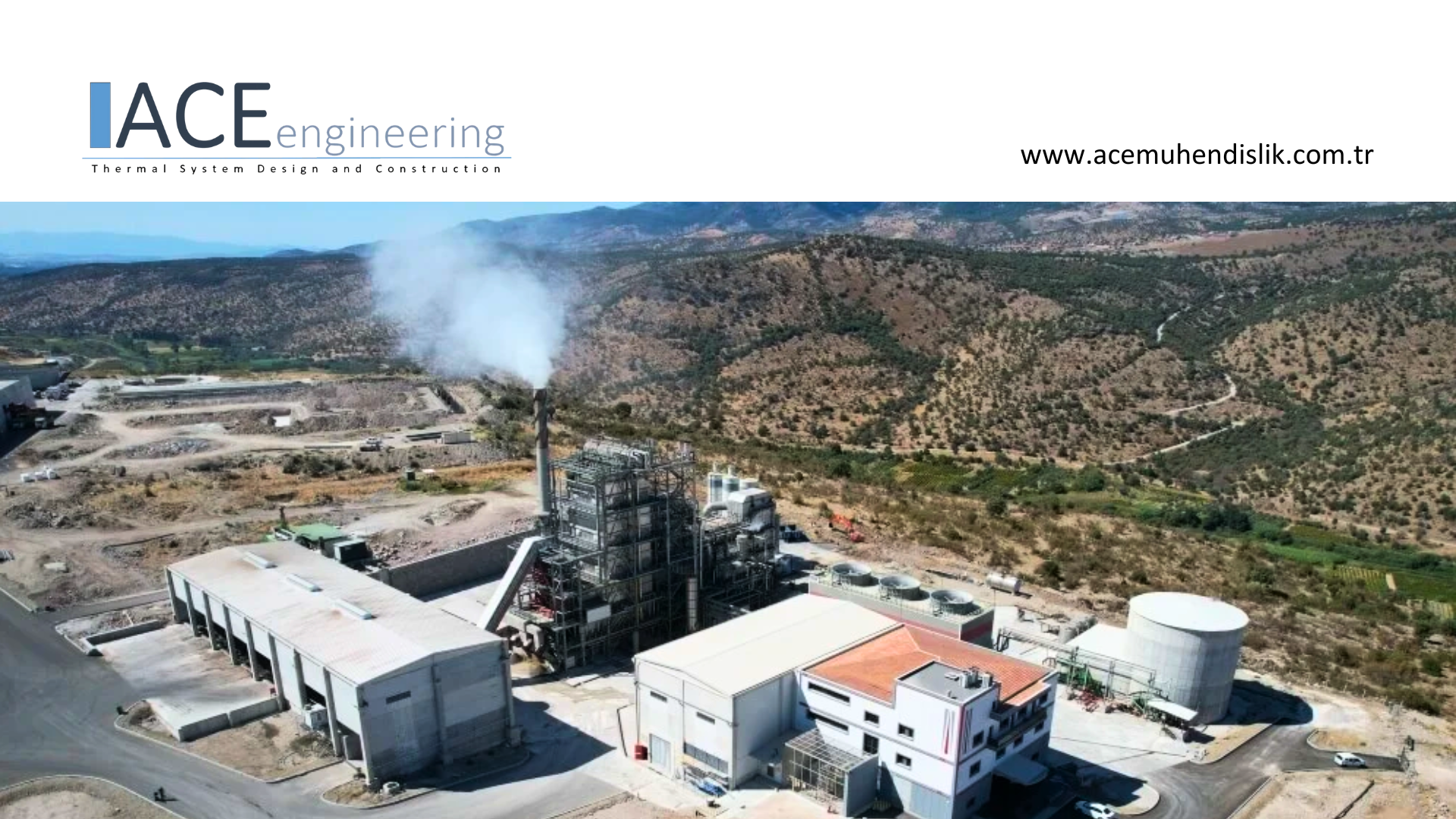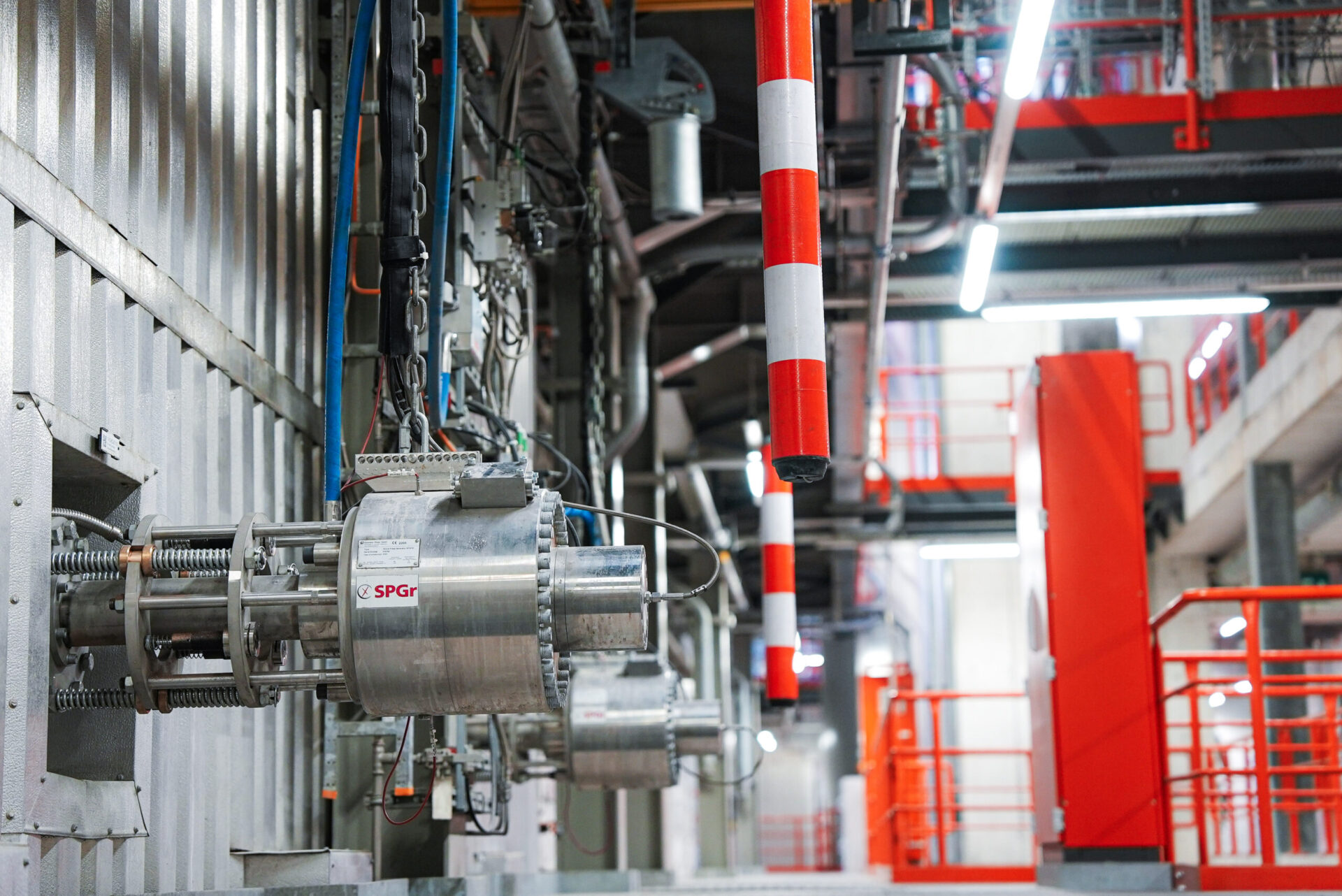Swiss Krono - a successful manufacturer of MFB boards and OSB boards - uses only natural raw materials that come from sustainably managed forests. In 2002 a biomass combustion plant was put into operation for the energetic utilization of various production waste, dust and bark. Fly ash deposits at the grid-like flue gas passage between the first and the second boiler pass (named curtain) have for many years frequently caused problems with plugging of the flue gas passage. Operating difficulties were finally eliminated by installation a Shock Pulse Generator (SPG) allowing an automatic online cleaning. Since then the plant has been working without such plugging to the satisfaction of the operator.
Outline of the plant
In the Energy Plant No.3 of the wood processing plant Swiss Krono www.swisskrono.de all the wood waste of the various production lines for wood fiber boards is incinerated in a grate-type combustor with an integrated steam boiler. The thermal energy, as obtained from the combustion process is transferred into electrical energy and fed into the public electrical network.
During the production of OSB coarse chipboards and MDF fibreboards, waste cut, sawdust and other dust are produced. For environmentally friendly disposal, natural wood waste and bark from external sources are also accepted. All these waste materials of category A1 and A2 (untreated wood types) are suitably conditioned and incinerated as “fuel” in the plant, which has been in operation since 2002. Compared to energy production using coal, 200’000 CO2 t per year are saved.
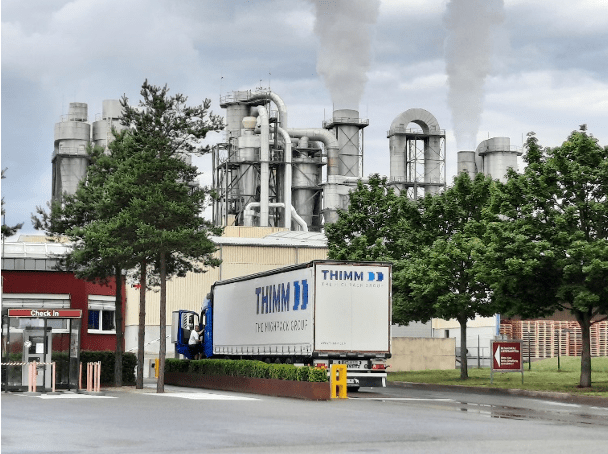
Fig. 1: View of the Swiss Krono plant in Heiligengrabe/DE
(Photo by Explosionpower GmbH)
The original design of the furnace / boiler
During the design stage, too little consideration was given to the fact that a large amount of fly ash is carried along when flue gas passes from the first to the second boiler pass. This fuel-related behavior is mainly related to the proportion of dust which is kept in abeyance in the flue gas flow and burns out only after a delay. At the same time, it was found that the sand content from the bark behaves abrasively and causes partial erosion of the tubes. This effect was induced by the continuously shorter passages and thus higher gas velocity between the tubes of the curtain. Additionally, the water-cooled tube grid (curtain) with tubes of Ø 57 mm diameter between the first and second boiler pass consequently suffered from clogging of the spaces between the tubes, which led to a rapid rise in temperature at the boiler ceiling. The remedy consisted then of a periodic manual cleaning of the curtain. Initially, the cleaning was carried out during boiler operation using a jet from a high-pressure water blaster (Kaercher) so as not to interrupt the boiler operation. In a later time, the remedy was carried out periodically by means of explosive cleaning, which led to a significant improvement. Both, the «Kaercher-cleaning» and the explosive cleaning are controversial from a safety point of view, because a probe is manually fed from the boiler house in front of the curtain through an opening in the boiler wall during the boiler operation. In the latter case a controlled pressure wave is generated to remove the deposits, however some flue gas may shoot out into the boiler house.
The technological improvement
The Shock Pulse Generators (SPG) of Explosion Power GmbH have been developed and continuously optimized for automatic online boiler cleaning since 2009. A unit of type EG10L has been in daily operation for cleaning of the curtain since January 2016. The location in the left boiler wall resulted from the fact that there was already a manhole available. Therefore, no additional bending of the tubes in the membrane wall to weld a nozzle was necessary. The DN 125 nozzle was installed in the door of the manhole. Although the SPG is «sole arranged laterally to the curtain», the SPG cleaning performance in the approx. 4.5 m wide boiler is considered good. The spatial distribution of the shock wave induces a structure-borne sound wave in the caking and sets the dirty pipes into short-term vibration, which loosens the deposits. The subsequently generated slight negative pressure of the retreating shock wave forms a suction and favors the loosening and falling down of the deposits. The whole process of the shock pulse lasts only a few milliseconds.
The shock pulse is automatically triggered every 8 hours from the control system of the plant. Such requires no further monitoring or presence of the operating personnel on site. The boiler always remains closed against the boiler house. Since the initial commissioning of the SPG the boiler temperature at the ceiling has been maintained at 810 to 820 °C – almost constantly – throughout the entire travel period. The curtain tubes remain free of deposits. As the spaces between the tubes ensure a free passage of flue gas, the tubes thus remain intact without abrasion.
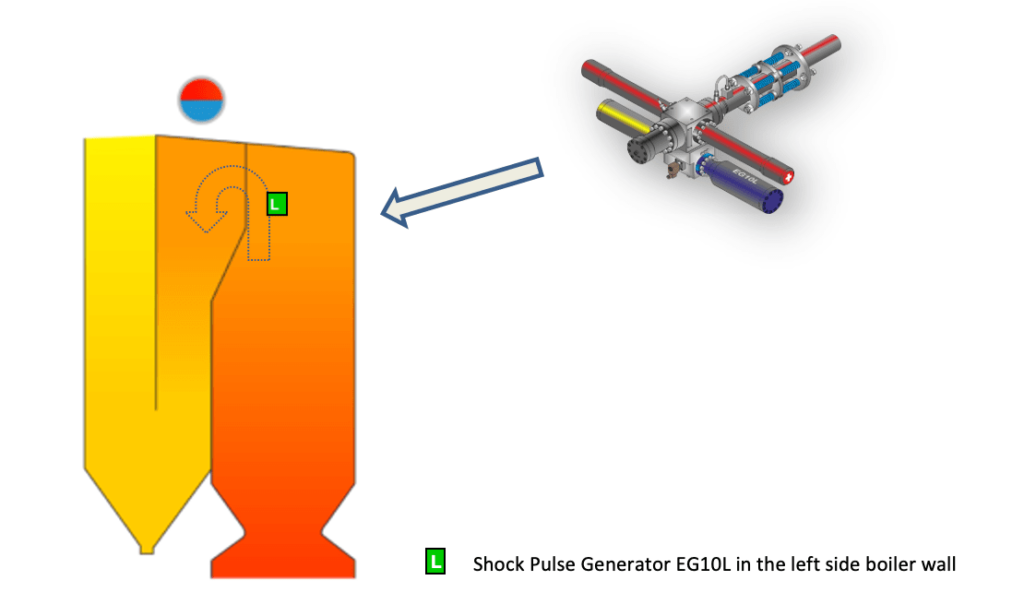
Fig. 2: Graphic of the biomass boiler with indication of the installation position of the SPG for cleaning the curtain.
(Graphic by Explosionpower GmbH)
The gas management is kept simple. For the single SPG and due to the long intervals of the pulse triggering, one gas bottle of oxygen and one of methane are sufficient. For gas cushioning, a bottle of nitrogen is also available. All these gas bottles last very long and are changed individually as needed. The gas reduction valves are installed on a rack near the gas bottles and as well near to the control unit of the SPG. The control arrangement consists of a valve panel, comprising control valves for filling the dosing tanks of the SPG and letting the gases pass for mixing in its combustion chamber. The actual control unit, which is located above the valve panel, contains a programmed control of the valve actuating regime. The pulse triggering, on the other hand, is controlled by the central control system of the plant. The operating personnel therefore does not have to deal with the cleaning of the curtain and can devote themselves to the overall operation of the rather extensive fuel conditioning, the fuel feed and combustion, the flue gas cleaning and the power generation.
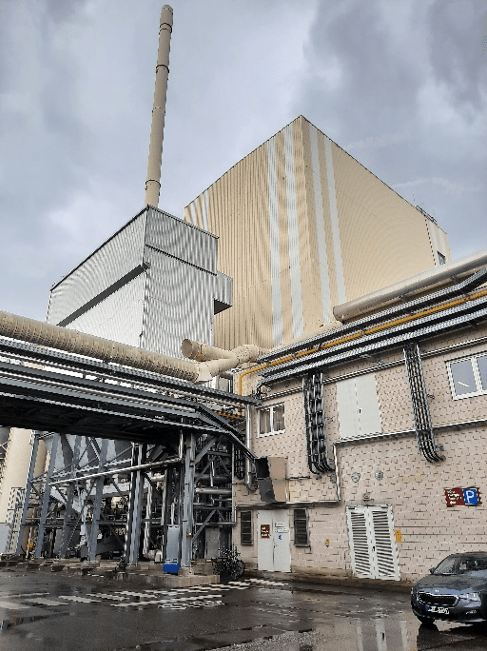
Fig. 3: View of the biomass combustion plant within the complex of Swiss Krono
(Photo by Explosionpower GmbH)
The operator is very satisfied with both, the cleaning performance- and the reliability of the SPG unit. It is being considered to install another SPG in the second boiler pass to clean the walls from deposits.
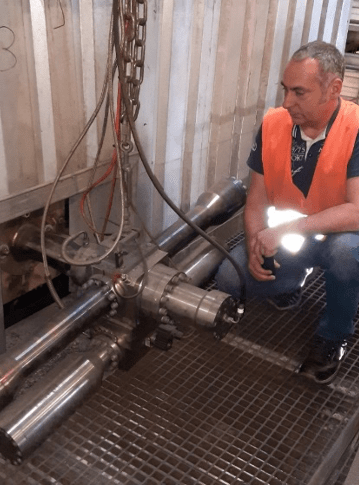
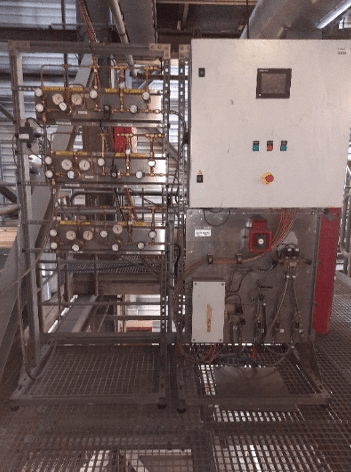
Fig. 4 and 5: Arrangement in a spatially limited space:
Left: SPG installed in the left side wall
Right: The control unit with the valve panel located below. Next to the left side is the gas reduction station
(Photo by Explosionpower GmbH)
Key data of Swiss Krono, biomass combustion in the Energy Plant No. 3:
Operator: Swiss Krono Tex GmbH & Co. KG
Production plant in Heiligengrabe: since 1992
Operation of biomass combustion: since 2002
Planning and execution: Aalborg Energie Technik a/s, Denmark
Annual output: approx. 130’000 tons of wood waste (natural wood A1 / A2)
Number of lines: 1
Thermal output boiler 65 MWth
Steam capacity: 78 t/h
Steam parameters 452 °C / 70 bar
Boiler width approx. 4.5 m
Steam utilization: condensation turbine max. 20 MWel
Flue gas treatment: SNCR-DeNOX, fabric filter with hydrated lime injection, wastewater free

